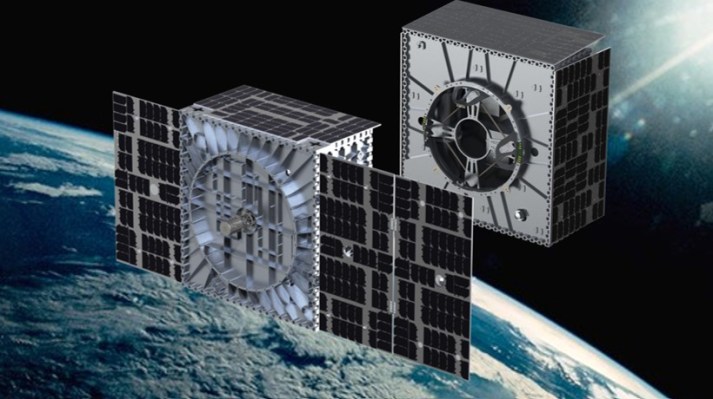In-space logistics startup Atomos Space will launch its first demonstration mission on SpaceX’s Transporter-10 in the first quarter of 2024, as the company looks to gain an early foothold in the emerging market for orbital transfer services.
The five-year-old company will send up two spacecraft, an orbital transfer vehicle (OTV) called Quark and a target vehicle, Gluon. After separating from SpaceX’s Falcon 9 rocket, Quark will attempt to autonomously rendezvous and dock with Gluon, and then refuel from the target vehicle. During the mission, the two spacecraft will attempt to demonstrate additional maneuvers, including release, re-docking and orbital transfer.
The two spacecraft will essentially demonstrate the method by which Atomos intends to deploy large satellite constellations, whereby customer payloads will be integrated to Gluon for launch and captured in-orbit by Quark.
These maneuvers are extremely technically challenging but could be a game-changer for the economics of operating spacecraft on-orbit, Atomos co-founder and CEO Vanessa Clark said in a recent interview.
“Being able to rendezvous with spacecraft in this manner is like our SpaceX-landing-the-Falcon-9-first-stage moment,” she said. “It changes the equation in terms of cost for in-space transportation and mobility, and the services that we can provide.”
Atomos, which has raised over $26 million since its founding, is taking a slightly different approach to in-space transportation than some of its competitors, Clark said. As opposed to launching expendable OTVs as kick stages, Atomos’ approach is to use “space resident” OTVs that are already in orbit, ready to move satellites around. Designing a reusable spacecraft that rendezvous with payload on orbit also drives the cost down for both Atomos and their customers, Clark said: The customer can maximize launch costs by putting more mass in the rocket payload fairing.
“The analogy is that we’re putting really efficient last-mile delivery vans at the airport rather than flying the delivery van from the departure airport with all of the payloads,” she explained. “We can reduce the number of flights we need and increase the payload we take.”
The company is also taking a vertically integrated approach, building both the OTV and the target vehicle for rendezvous. Atomos had been working with a bus vendor but decided to move the design and manufacturing of the spacecraft and much of its subsystems in-house last summer.
Issues that have emerged during other companies’ attempts to demonstrate on-orbit rendezvous are the result of a lack of vertical integration, Clark argued.
“Challenges arise when the whole system isn’t familiar to your engineering team, and you’re compromised in your ability to do integrated testing on the ground to make sure every little piece works together,” she said.
After this demonstration mission, Atomos plans to launch a full-powered Quark to enter commercial service, and to further develop a separate OTV, Quark Mark II, that will have robotic arms and will be capable of serving customers in geosynchronous orbit.
Longer term, Atomos is also looking to differentiate itself via its ongoing investment in nuclear propulsion. While that capability won’t come online any time soon, it is the “end state” toward which the company is scaling, Atomos co-founder and COO William Kowalski said.
“Everyone recognizes this is a required capability,” he said.
Atomos is planning to launch a pathfinder mission testing a low-power fission reactor in-orbit sometime in the next few years. Though it will chiefly be a technology demonstration, Kowalski said the mission would also serve to cut through many of the complex and murky regulations around nuclear power.
“If you really want to move around, even within Earth orbits, moving around, the way we all envision is going to require significantly more power, he said. “Chemical systems are just not going to be able to do it.”
